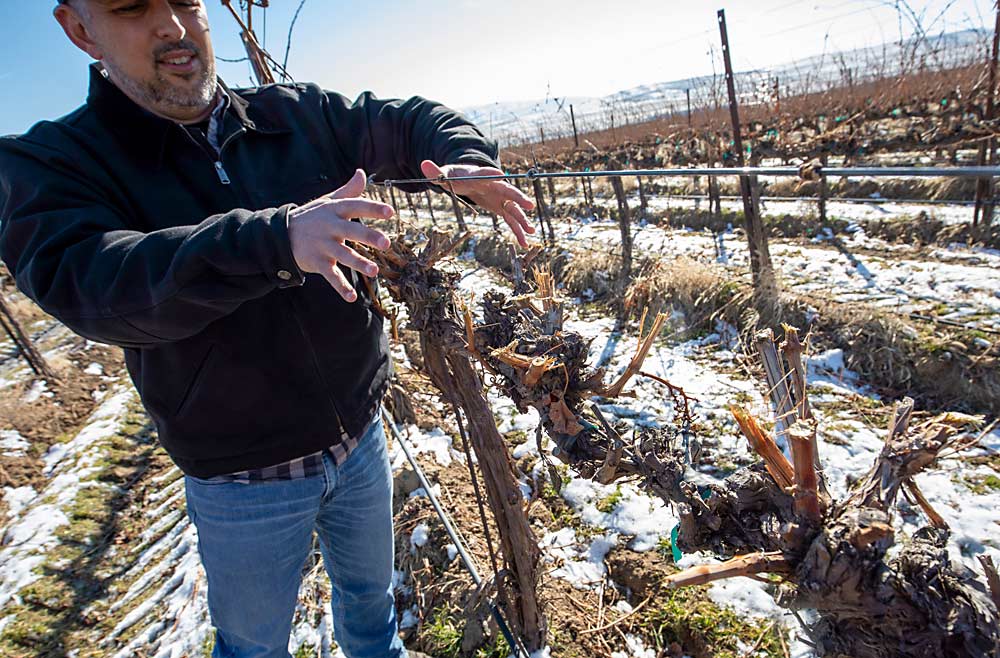
In an era with a shrinking supply of workers and rising labor costs — in addition to other spiking expenses — Washington wine grape growers are seeking new ways to manage these labor challenges.
The key to the efforts: flexibility, in everything from pruning approaches to scheduling shifts.
At Ste. Michelle Wine Estates’ Cold Creek Vineyard, investing in mechanization is the primary strategy for managing labor expenses, said vineyard manager Joe Cotta.
“Through mechanized pruning, shoot thinning, leafing and suckering, we’ve cut our labor costs in half,” he said during a talk at the labor session of a conference organized by the Washington Winegrowers Association in February.
But, like many Washington growers who purchased precision pruners in recent years, he noticed that year-after-year mechanization led to overcrowded cordons, requiring periodic hand pruning to reset the spurs, “so we’re not building a bird’s nest here,” Cotta said when Good Fruit Grower followed the conference with a vineyard visit. But when he sent crews back in to spur prune after several years of mechanization, the wood accumulation and complexity required a lot more pruning time.
“If we’re going to continue mechanically, the amount of wood in the fruiting zone will increase every year.” Cotta said. “We’re not yet comfortable with knowing how we’ll manage high levels of wood and when it could become detrimental to production or quality.”
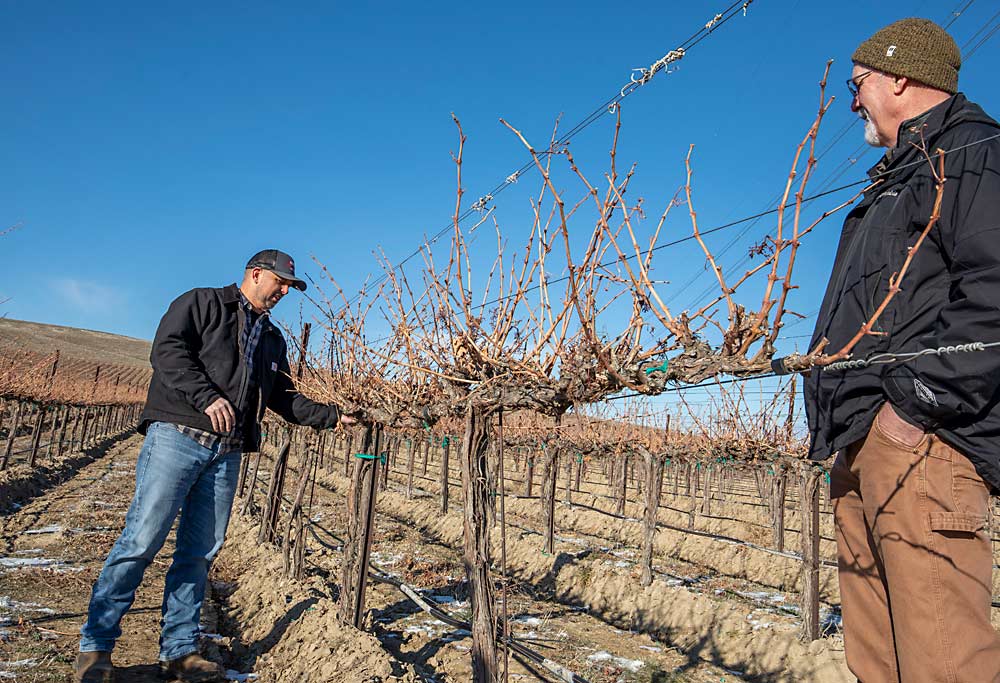
For some cultivars that have long been mechanically managed, that’s been fine, said Mike Means, Ste Michelle’s director of vineyard operations. Year after year, it can lead to more growing points, more clusters and, therefore, smaller clusters, he said. But for premium Cabernet Sauvignon, they wanted to find a balance that would preserve the benefits of spur pruning without the full costs.
“It maintains the flexibility, so if we want to pull back, we can,” Cotta said. Not that he’s planning on it — Cold Creek has fully mechanized about 100 of its 700-plus acres, he said, enough to maximize the use of the vineyard’s one Pellenc TRP precision pruner.
Other growers who tried precision pruning in recent years have returned to annual spur pruning, using the machines in a prepruning role instead (see “Mechanization sweet spot” from our March 15 issue). Cotta wanted to strike a balance. He measured the time and payroll cost for crews to spur prune a block after two, three or four years of mechanized pruning, compared to the savings each year of mechanical pruning. After four years with the machine, however, the wood was so overgrown that the cost to slowly spur prune negated the savings from mechanization.
For his vineyard, a three-year rotation seems to be the sweet spot, Cotta said. That’s two years of mechanical pruning alone, followed by one year of hand pruning to clean up the details. The math will likely vary for others, he said.
As for pruning after mechanization, there’s one key rule: “Keep the spurs close to the cordon,” Cotta said.
When spur pruning, workers are trained to favor the most fruitful wood: 1-year-old wood coming off of 2-year-old wood, he said. But to clean up after mechanization, that rule goes out the window in favor of location. Some workers get the idea more quickly than others, so it might make sense to split up crews, depending on the type of pruning required, he added.
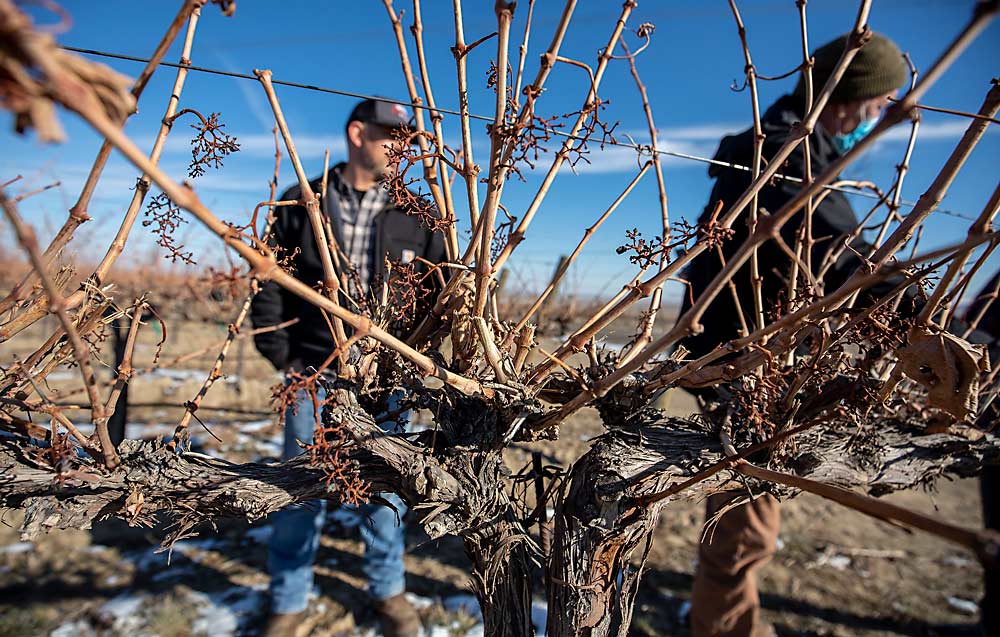
Mechanization through the season is a key to Cold Creek’s plans for the future, including new plantings at 9-foot spacings, rather than 8, so they have space to skip the wire-lifting step, Cotta said.
“We want to be shoot thinning and fruit thinning in high-tier blocks, and you have to move people to go move wire,” he said. In the mechanized blocks, if they can get the equipment through without running over shoots, they skip it.
Overall, Cotta and Means said they are seeing growing acceptance of mechanization from their winemakers.
“Everything we do is so time-sensitive,” Means said. “Mechanization is a way to help us hit the timing.”
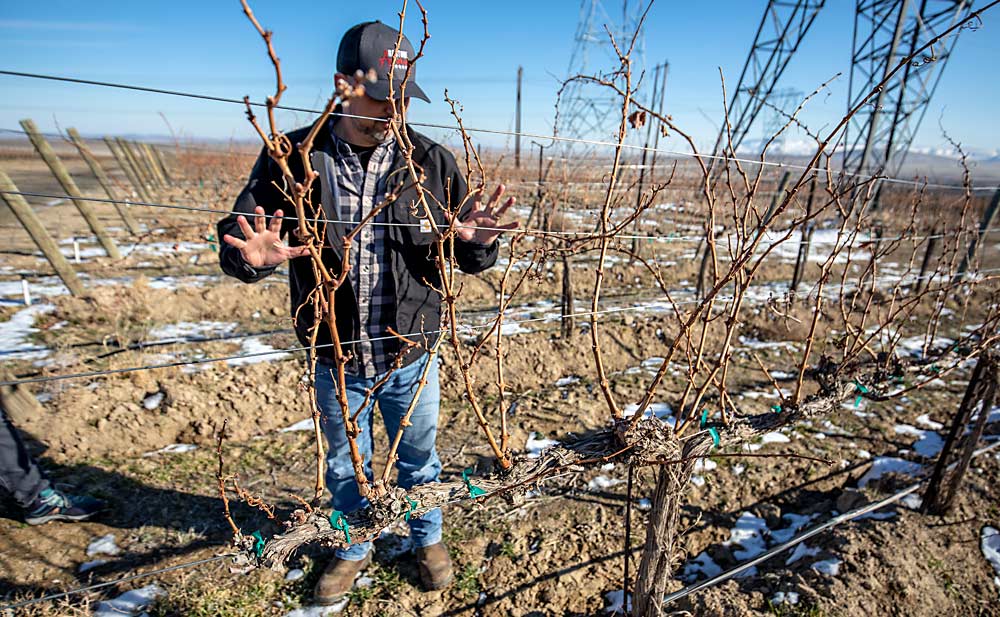
Workforce flexibility
Flexibility was also a key philosophy for other speakers on the conference panel who addressed retaining workers in an era of escalating costs and overtime challenges.
“We know that our crews have families. We have to make sure we listen and adapt to work schedules that are going to work for them,” said Rosanna Lugo, the human resources director for North Slope Management, a vineyard management company in Walla Walla. “Flexible hours is huge.”
A willingness to be flexible with scheduling shifts complicates managerial logistics, Lugo said, but she credits the approach for the company’s waitlist of workers wanting a spot on the crew of 45 — at a time when the wider industry is having a hard time finding qualified employees. Flexible scheduling helps to accommodate parents who can only work during school hours and employees who need two jobs now that overtime restrictions limit hours.
Lugo also stressed the importance of listening to workers and creating a culture in which they trust they can share concerns. For example, many vineyard workers are aging and, while they have decades of experience and knowledge, they might not be able to keep the pace they previously maintained, she said. Finding alternative roles, such as leaf pulling in advance of the piece-rate picking crew, can help.
When it comes to changing schedules to manage overtime, working with workers will be key to finding tenable solutions, added Precept Wine vineyard manager Dustin Tobin, another panelist.
“This is a conversation that’s tough, but it has to be talked about,” he said.
Tobin and Lugo both talked about worker recognition awards and bonuses that can help workers feel appreciated and create a culture they want to return to.
“We try to make workers feel like part of our farming family,” Tobin said.
—by Kate Prengaman

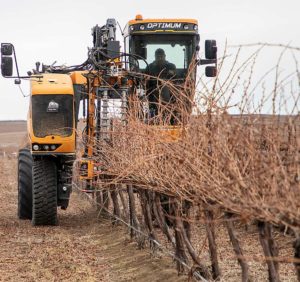





Leave A Comment